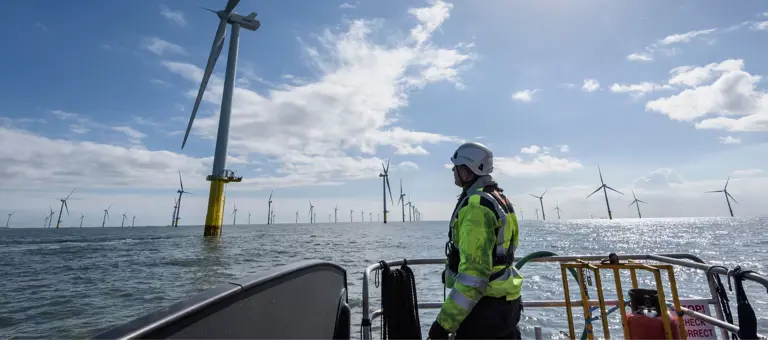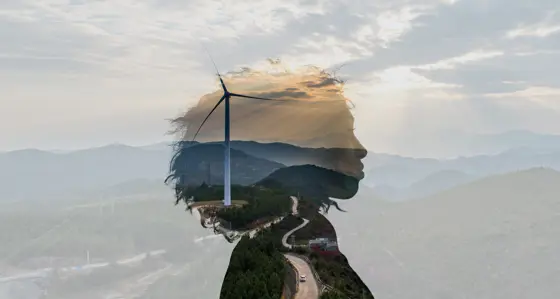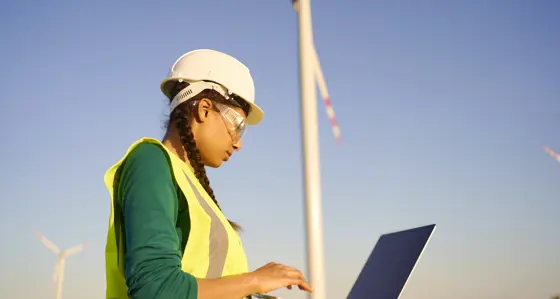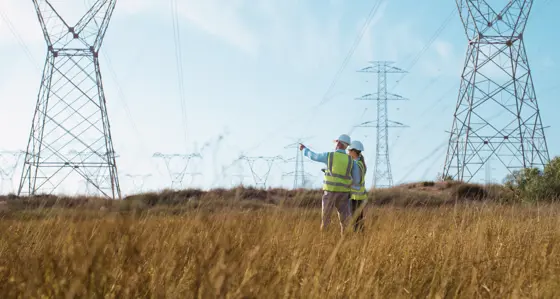
Floating offshore wind - The quest for scale
8 min read 8 February 2024
Harvesting wind in previously inaccessible seabed areas has many advantages, but there are some obstacles that need to be overcome before we can deploy floating offshore wind at scale. One of the main challenges is the lack of standardisation in emerging technologies. Additionally, significant investment in port infrastructure is required to make deployment feasible.
Fixed-bottom turbines currently dominate the global offshore wind market, but their limitations in deep water make floating alternatives attractive to scale up offshore wind deployment.
Floating wind, forecasted to reach more than 25GW by the mid 2030s, offers numerous advantages, including access to higher wind speeds further out at sea, expanded seabed areas, and reduced environmental impact during installation and operation.
Key players, such as the UK, the US and China, and numerous European countries, are making significant allocations for floating offshore wind projects. But despite the potential, the mass roll-out of floating wind turbines faces technical challenges. These include a lack of standardisation in the emerging technologies around foundation design, as well as supply chain constraints, leading to a relatively high levelised cost of energy.
Overcoming these barriers requires substantial investment, port infrastructure development and policy support. As countries race to achieve their energy transtion goals, floating offshore wind is likely to be a mix of innocation and co-operation.
Download our full report below and get in touch to find out more.
Related Insights

Investing in uncertainty: European power market outlook 2025
Our latest outlook points to a more uncertain energy transition, shaped by political and economic volatility across Europe in the form of Trade Wars, Populism and Remilitarisation.
Read more
REMA and investing in GB power market under uncertainty
Learn about the opportunities and challenges of investing in the GB power market under uncertainty and how Baringa can help
Read more
Three ways in which increased volatility and flexibility are reshaping Spain’s energy market
Spain's energy market faces profound change due to curtailment, negative prices, and a recent blackout, discussed at our roundtable event.
Read more
Turbocharging the benefits of Great Britain's emerging home energy efficiency sector
Improving the energy efficiency of residential housing stock to an Energy Performance Certificate (EPC) rating of C or above is not just an environmental necessity but also a powerful economic strategy that can deliver multifaceted benefits for society.
Read moreRelated Client Stories

Shaping New Zealand’s energy transition conversation
How do you create a distributed energy model that draws on best practice from around the world but is also fit-for-purpose for New Zealand?
Read more
Electricity network operator: securing critical national infrastructure with hybrid defences
Breaking new ground with a hybrid security approach.
Read more
Maximising impact from AI investment for a global energy leader
Discover how a series of experiential learning events resulted in employee confidence in AI skills hitting 85%.
Read more
Maintaining the stability of the New South Wales power system
How do you ensure the future stability of the NSW power system?
Read moreIs digital and AI delivering what your business needs?
Digital and AI can solve your toughest challenges and elevate your business performance. But success isn’t always straightforward. Where can you unlock opportunity? And what does it take to set the foundation for lasting success?